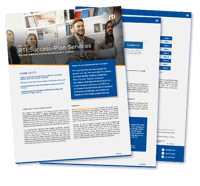
Navigating the Shift from Gigantic Models to Collaborative Intelligence
For years, the pursuit of Artificial Intelligence has revolved around a singular vision: ever-larger models, fed by endless streams of data and immense computational power. We’ve already witnessed astonishing breakthroughs from these monolithic designs, such as the powerful Large Language Models (LLMs) that have reshaped our digital lives. Still, a growing chorus within the AI community, from researchers to industry titans, is now acknowledging a fundamental truth: these scaling laws are encountering diminishing returns.
The era of simply making models bigger to yield proportionally better results appears to be fading fast. Limits are being hit in the attempt to generate truly novel, high-quality data – even with more parameters, the gains in reasoning and problem-solving for novel tasks are becoming increasingly marginal. The economic reality is also stark: each incremental improvement demands exponentially greater investment, making further brute-force scaling increasingly untenable.
This crucial moment calls for a strategic pivot. Instead of chasing the illusion of a single, all-encompassing "super-brain," the AI field is now turning its gaze towards a more profound, and perhaps more natural, paradigm: the concept of multiple expert agents, or a "Society of Mind." This isn't a new idea. Decades ago, Marvin Minsky proposed that intelligence doesn't stem from a single, perfect principle, but rather from the "vast diversity" of countless simple "agents" working together. His vision, once considered a philosophical framework, is now proving uncannily prescient for practical AI design.
Imagine that instead of having one colossal model trying to do everything, you could leverage a collaborative network of specialized AI agents. To start with, each agent would be an expert in its domain: be it visual processing, language generation, logical reasoning, or interacting with the physical world. This "Mixture-of-Experts" architecture, where a gating mechanism routes tasks to the most appropriate specialist, would allow for far more efficient use of compute and data, potentially unlocking capabilities that monolithic models simply cannot achieve.
These multi-agent systems only thrive if they have a fast, reliable way to share knowledge. That means they require an explicit communication fabric: a nervous system, to coordinate and collaborate.
With this type of communication layer in place, they can collectively tackle complex, multi-step tasks with enhanced accuracy, greater reliability, and improved output quality compared to any single model. This approach also introduces crucial benefits such as redundancy and robustness, where if one agent falters, others can compensate, making the overall system more resilient. Perhaps most importantly, the right communication layer can make the decision-making process across agents not only traceable but data-centric, making debugging and alignment with human intent far easier.
The Future of AI: Physical Intelligence
The future of AI lies not just in digital reasoning, but in its ability to act within the physical world, where intelligence meets real-time decision-making in environments such as autonomous vehicles, surgical robotics, and power grids. This physical intelligence redefines AI as a participant in complex systems, not just a mere observer. Realizing this potential demands collaborative, multi-agent architectures underpinned by robust communication infrastructure.
Achieving this vision requires moving beyond ever-larger models toward more collaborative, specialized architectures. Multi-agent, society-of-mind approaches are rapidly gaining traction, with networks of expert systems working together to solve complex problems. However, orchestrating such diverse agents effectively requires a proven communication backbone: one that already connects safety-critical systems today.
RTI Connext: Introducing AI into Existing Systems
Presently at work in over a million autonomous vehicles, NASA's launch and recovery system, and air traffic control across Canada and the North Atlantic, RTI Connext communication software already provides the "nervous system" that connects intelligent components to the physical world.
This proven track record in high-stakes, real-time environments makes RTI uniquely suited to helping teams who want to embrace a "drop-in AI" approach. In essence, RTI Connext software enables teams to make the data model serve as the main interface, so that new AI features can be integrated consistently and flexibly, without modifying existing components or requiring costly rework.
A key advantage of this approach is that instead of organizations being forced to rebuild architectures for AI, Connext can simply extend existing systems with AI agents that can immediately interoperate with both legacy and modern components.
Based on the Data Distribution Service (DDS™) standard, RTI Connext delivers an architecture that follows the principle of data centricity, which is the key for seamlessly integrating AI into existing systems. That standardization ensures interoperability between agents from different teams or vendors, a critical requirement for AI systems that will, by design, be heterogeneous and distributed.
With RTI Connext in the mix, multiple intelligent agents can finally interact reliably and efficiently, forming the foundation for the next era of AI: one that is smarter, distributed, and physically integrated.
Ready to explore how we can help supercharge AI development and unlock the full potential of multi-agent systems?
Learn more about RTI Connext here:
- Blog: The New Era of AI Integration
- Blog: Introducing Connext AI: An Entirely New Way to Develop Smart Physical
- RTI Web Page: The Future of Industry is Connected
Try it for yourself or contact us directly to discuss how Connext can help integrate AI into your systems.
About the author:

Andy Hall is a Senior Field Application Engineer at RTI, bringing over two decades of expertise in distributed systems, embedded systems and high-performance software architectures to various industries. Based in the UK, Andy specializes in designing and implementing robust, scalable solutions that meet the demanding requirements of mission-critical environments.
Andy provides pre-sales technical consultation, system architecture guidance, and post-deployment support, helping companies leverage RTI's advanced communication technologies to enhance the operational efficiency and reliability of real-time systems.
Posts by Tag
- Developers/Engineer (180)
- Technology (79)
- Connext Suite (77)
- News & Events (75)
- 2020 (54)
- Aerospace & Defense (53)
- Standards & Consortia (51)
- Automotive (38)
- 2023 (34)
- 2022 (29)
- IIoT (27)
- 2025 (25)
- Leadership (24)
- Healthcare (23)
- 2024 (22)
- Connectivity Technology (21)
- Cybersecurity (20)
- 2021 (18)
- Culture & Careers (15)
- Military Avionics (15)
- FACE (13)
- Connext Pro (10)
- JADC2 (10)
- ROS 2 (10)
- Connext Tools (7)
- Connext Micro (6)
- Databus (6)
- Transportation (5)
- Case + Code (4)
- Connext (4)
- Connext Cert (4)
- Energy Systems (4)
- FACE Technical Standard (4)
- AI (3)
- Oil & Gas (3)
- Research (3)
- Robotics (3)
- Connext Conference (2)
- Edge Computing (2)
- Golden Dome (2)
- MDO (2)
- MS&T (2)
- RTI Labs (2)
- TSN (2)
- ABMS (1)
- C4ISR (1)
- DOD (1)
- ISO 26262 (1)
- L3Harris (1)
- LabView (1)
- MOSA (1)
- MathWorks (1)
- National Instruments (1)
- Simulation (1)
- Tech Talks (1)
- UAM (1)
- Videos (1)
- eVTOL (1)
 Success-Plan Services
Success-Plan Services Andy Hall
Andy Hall